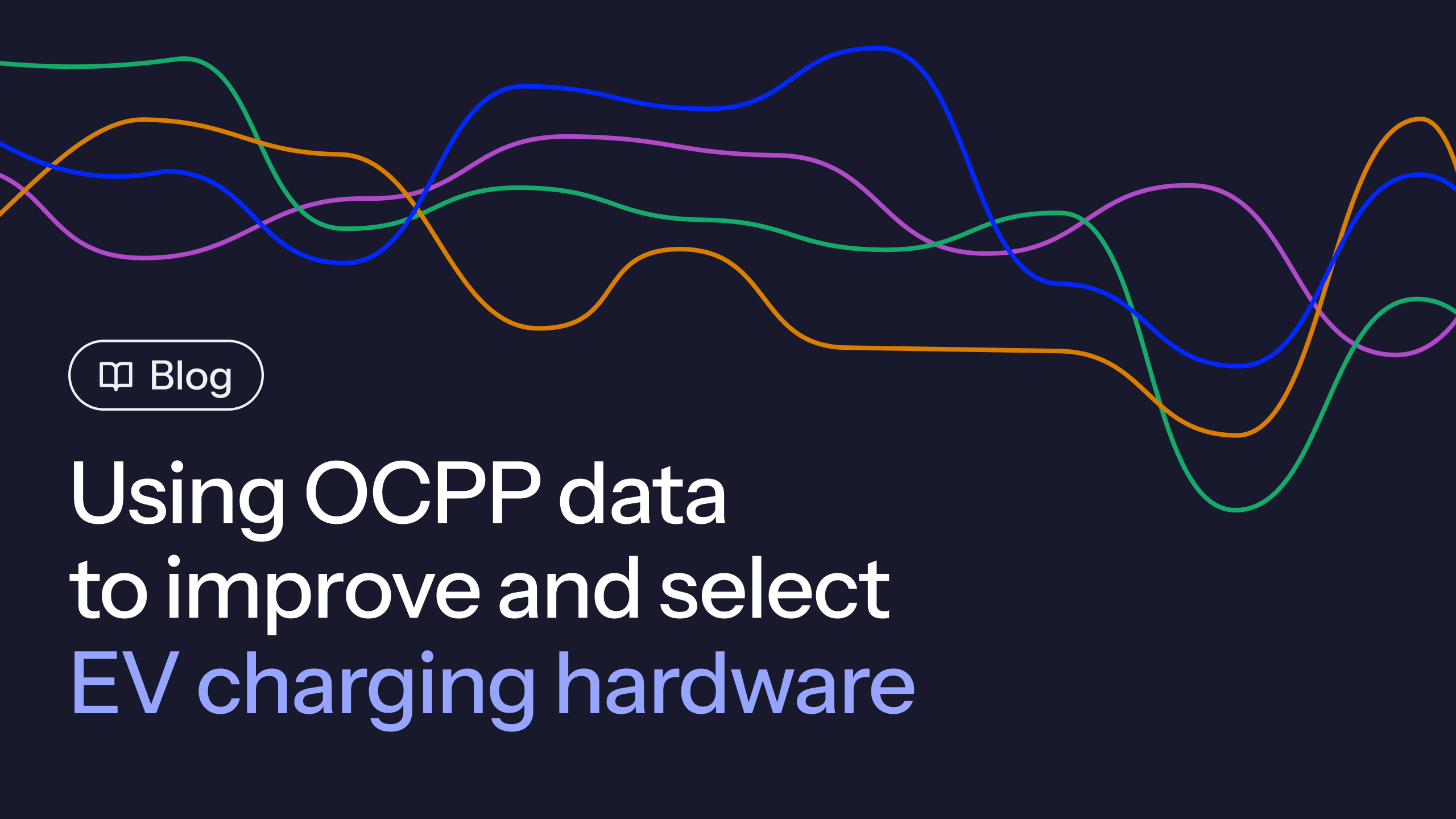EV charging networks are facing a critical challenge today: Charge sessions in Europe are failing more than 10% of the time, and the failure rate is even higher in the United States. At Monta we also observe big differences in quality and performance throughout the field—for some charge point models, failure rates jump to 40%.
So how can charge point operators (CPOs) and installers choose reliable hardware? And what can manufacturers do to improve charge point performance to begin with?
We’ve developed a set of objective metrics for measuring quality and performance. Our goal is to help hardware manufacturers understand and improve their performance, and to help CPOs make the best decisions as they select hardware.
With profitability and customer satisfaction hinging on the performance of charging infrastructure, making data-driven decisions is critical.
Open charge point protocol (OCPP): How hardware and software work together
Open charge point protocol (OCPP) is an agreed set of communication standards that allows many types of chargers to speak to different charge point management systems (CPMS).
Thanks to OCPP, we can compare basic data across different charger models, though they communicate and perform differently. No matter the hardware, a stable network connection is essential for consistent performance—our data-only SIM cards guide covers how to ensure reliable connectivity for all your charge points.
How OCPP data helps evaluate performance
Most current charging hardware is on the OCPP 1.6 protocol, which was released in 2015. While the new OCPP 2.0.1 opens up even more performance and quality measures, OCPP 1.6 still provides valuable data:
- Heartbeat messages
- Status notifications
- Transaction data
- Error and fault codes
- Firmware management
How Monta defines and measures hardware performance
To make different hardware objectively comparable using OCPP data, Monta developed a standardised ranking system based on 3 key metrics:
- charge success rate
- uptime rate
- user satisfaction rate
Together, the three metrics build the performance score, which makes one hardware model comparable to another.
Charge success rate
The charge success rate is the percentage of sessions that result in a successful energy transfer to a vehicle. This measure is critical for drivers, CPOs, and manufacturers alike.
Uptime rate
The uptime rate shows how often a specific model is available for drivers to use.
Reliability is key to delivering a best-in-class user experience. Plus, most European regulations—AFIR, NEVI, UK Public Charging Regulation, and country-specific institutions like Germany’s NOW/BMDV—require uptime to be reported.
User satisfaction rate
Drivers using Monta Charge are welcome to leave comments and a rating of 1 to 5 after completing a charging session. CPOs and hardware manufacturers have direct access to that user feedback in Monta’s Hardware Portal.
Performance score
A charge point model’s overall performance score is calculated once a day, and is an average of its charge success rate, user satisfaction rate, and uptime rate.
Monta’s platform tracks every charge point model’s performance scores over a 30-day period. This allows us to reflect how a model performs across all key metrics over time, painting an overall picture of current performance.
Want to learn more?
Download this report for a full breakdown of how Monta’s scoring system
Top AC and DC chargers according to Monta users
If you are a CPO or anyone interested in how EV charging hardware performs, our supported charge points list is your go-to place. As of today, Monta integrates with more than 600 charger models from over 170 hardware brands.
The charge point model with the highest 30-day rolling performance score is ranked first, and so on. The rolling average ensures that ranks do not fluctuate heavily on a day-to-day basis, but still represent a trend for the charge point model.
What can hardware manufacturers do to improve performance?
“Measurement is the first step that leads to control and eventually to improvement. If you can’t measure something, you can’t understand it. If you can’t understand it, you can’t control it. If you can’t control it, you can’t improve it.” ― H. James Harrington
All our measures (charge success rate, uptime rate, user satisfaction rate) are a result of many different factors from real charging events within the value chain.
The success or failure of a charge—or a bad user rating—can come down to charger firmware, design oversight, hardware issues on the circuit board, a broken SIM, bad network connection, unstable grid supply, malfunction in the cable, temperature issues, bad installation, OCPP gateway issues, OCPP proxy failures, CPMS problems, configuration issues, authentication errors, and many more.
We strongly believe in using data to analyse where in this complex value chain things might be going wrong. Single installations or network issues will not have a large impact on performance data, but a bug in a firmware release can easily drag down a model performance if it’s deployed widely.
This is why Monta has invested in a Hardware Portal to give manufacturers the tools and data they need to make the most informed decisions.

They have access to performance data and detailed user feedback for brands, charge point models, and even individual devices. This helps Monta and the manufacturer identify potential improvements together, and ensure that performance can be maximised.
Want to learn more?
Download this framework for measuring EV charge point performance
